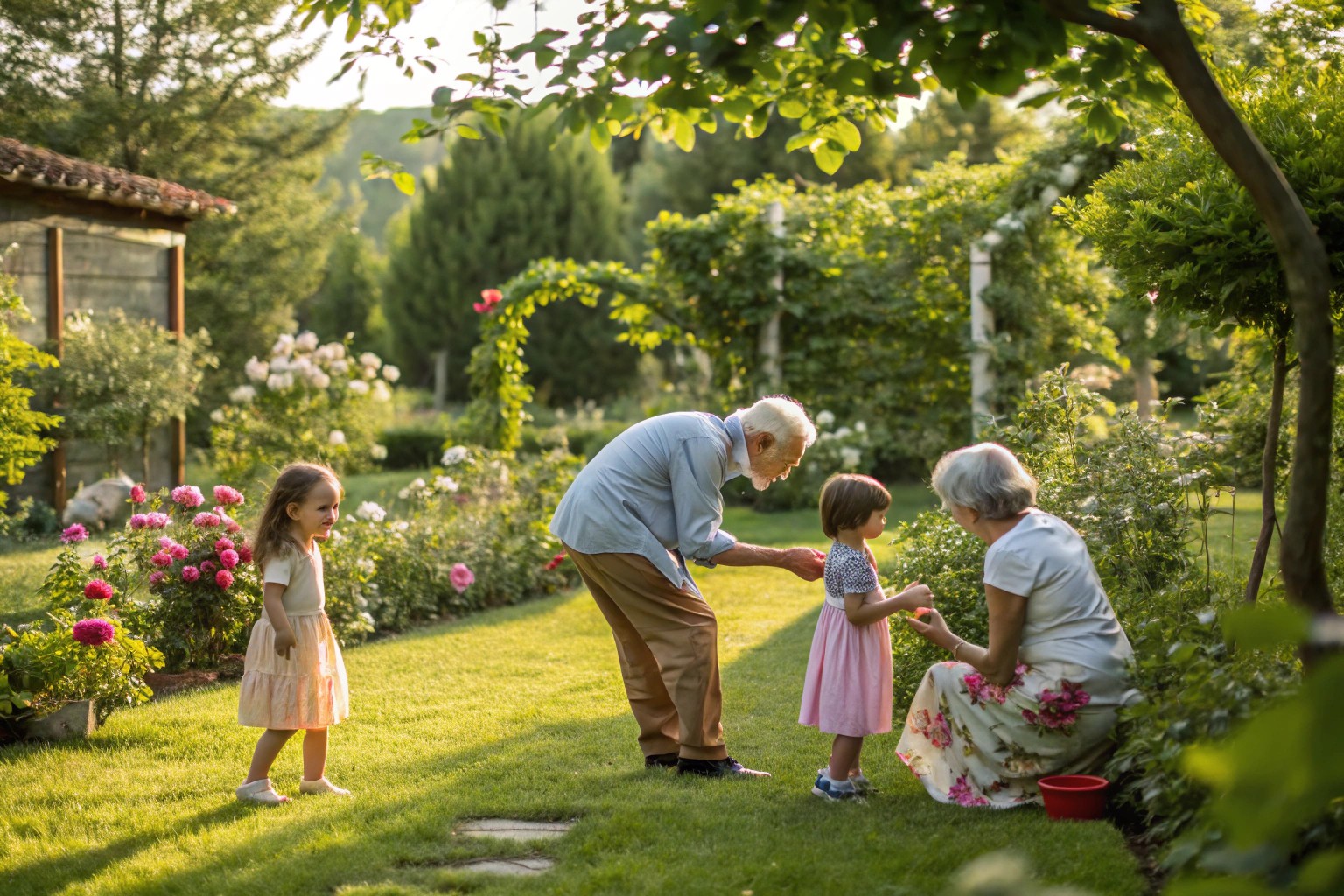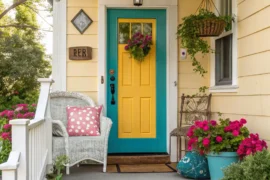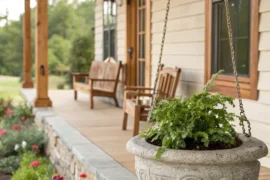Thoughtfully designed gardens have a unique ability to dissolve age barriers, creating spaces where wisdom meets wonder and stories are exchanged alongside seeds. Having witnessed countless moments of cross-generational connection in gardens across America, I’m convinced these spaces offer something our increasingly age-segregated society desperately needs: common ground where different generations can literally grow together.
Understanding Intergenerational Gardens
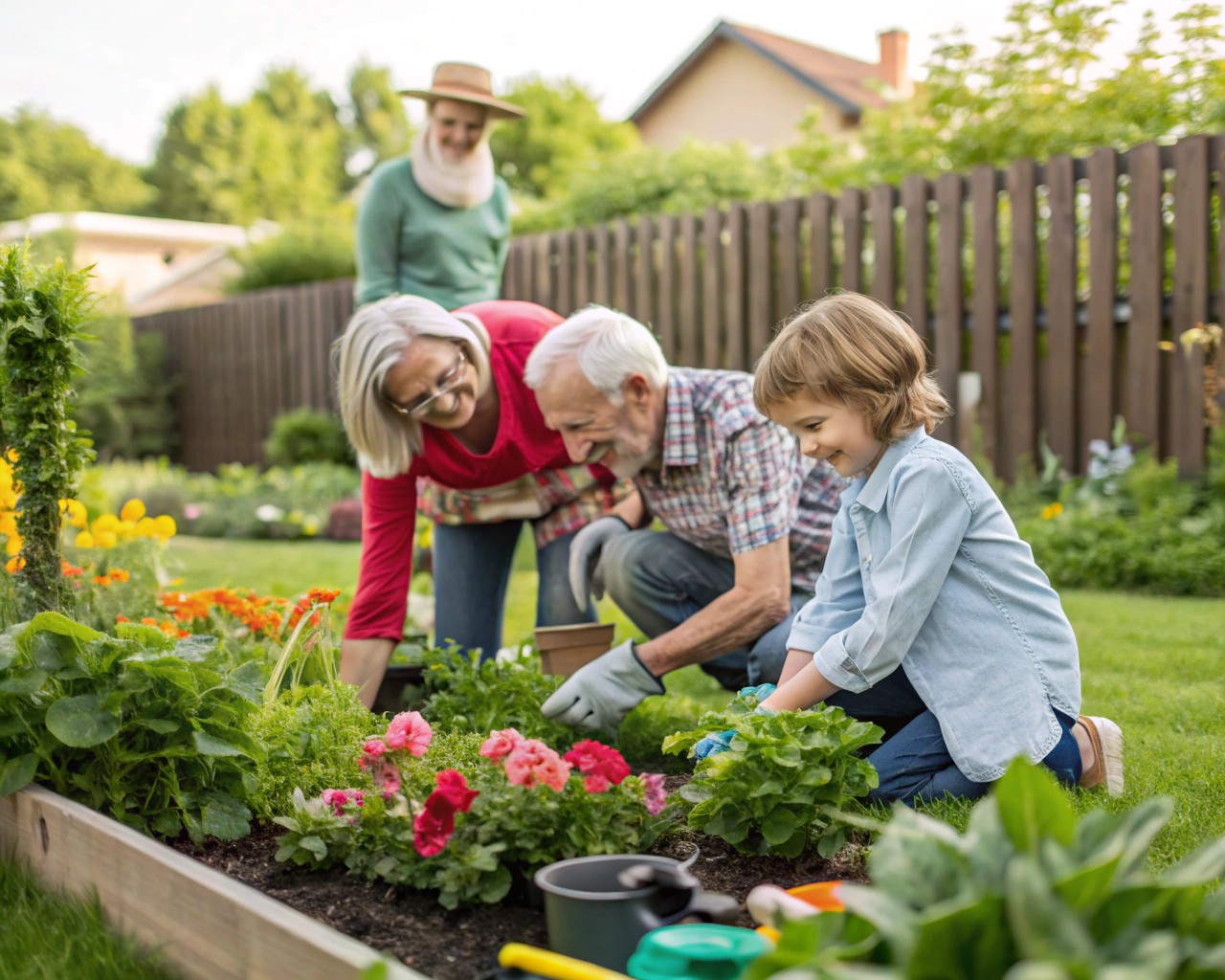
Intergenerational gardens are intentionally designed spaces that facilitate interaction, collaboration, and knowledge sharing across age groups. Unlike traditional gardens that might cater to specific demographics, these spaces incorporate elements appealing to everyone from toddlers to seniors.
The benefits of shared garden spaces extend far beyond aesthetics:
| Age Group | Physical Benefits | Social Benefits | Emotional/Mental Benefits |
|---|---|---|---|
| Seniors | Improved mobility and flexibility, reduced risk of chronic disease | Combat isolation, opportunity to share knowledge | Sense of purpose, stress reduction, cognitive stimulation |
| Adults | Physical activity, stress reduction | Community engagement, family bonding | Work-life balance, mindfulness practice |
| Youth | Hands-on outdoor activity, motor skills development | Teamwork development, social skills | Patience cultivation, responsibility, environmental awareness |
| Children | Sensory development, physical play | Learning to respect others, turn-taking | Wonder, curiosity, confidence building |
Susan Perlstein of the National Center for Creative Aging points out that creative activities like gardening enable seniors to share their lifetime of wisdom and skills, fostering productivity and social connection. This exchange creates a ripple effect of benefits across generations.
Designing Spaces That Welcome All Ages

When approaching garden design with multiple generations in mind, several principles become essential:
-
Accessibility: Wide, level pathways, raised beds at various heights, and strategically placed resting points ensure everyone can navigate and participate. In a family garden I designed in Minneapolis, we incorporated stepping stones at different heights—challenging enough for children but stable enough for grandparents.
-
Multiple gathering spaces: Include both intimate seating areas for one-on-one conversations and larger spaces for group activities. One client aptly described the need for “together-but-separate spaces” where different activities can happen simultaneously without feeling disconnected.
-
Balance of sun and shade: Different generations have varying tolerances for weather conditions. Providing variety allows everyone to find their comfort zone.
-
Clear sightlines: Allow adults to monitor children while engaging in their own activities, creating peace of mind for parents and grandparents.
-
Distinct yet connected zones: As one client in Boston put it, “We needed spaces that let the kids be kids while giving the adults somewhere to relax without feeling disconnected.”
The balance between private and communal areas forms the foundation of effective multigenerational spaces. In urban settings especially, family garden designs must serve multiple purposes: home office, exercise area, children’s play space, entertainment area, and multiple seating areas, with hard landscaping softened by plants.
Creating Activity Zones for Shared Experiences
The most successful intergenerational gardens incorporate distinct activity zones that invite participation across age groups. These thoughtfully crafted areas serve as conversation starters and skill-sharing opportunities.
The Growing Zone
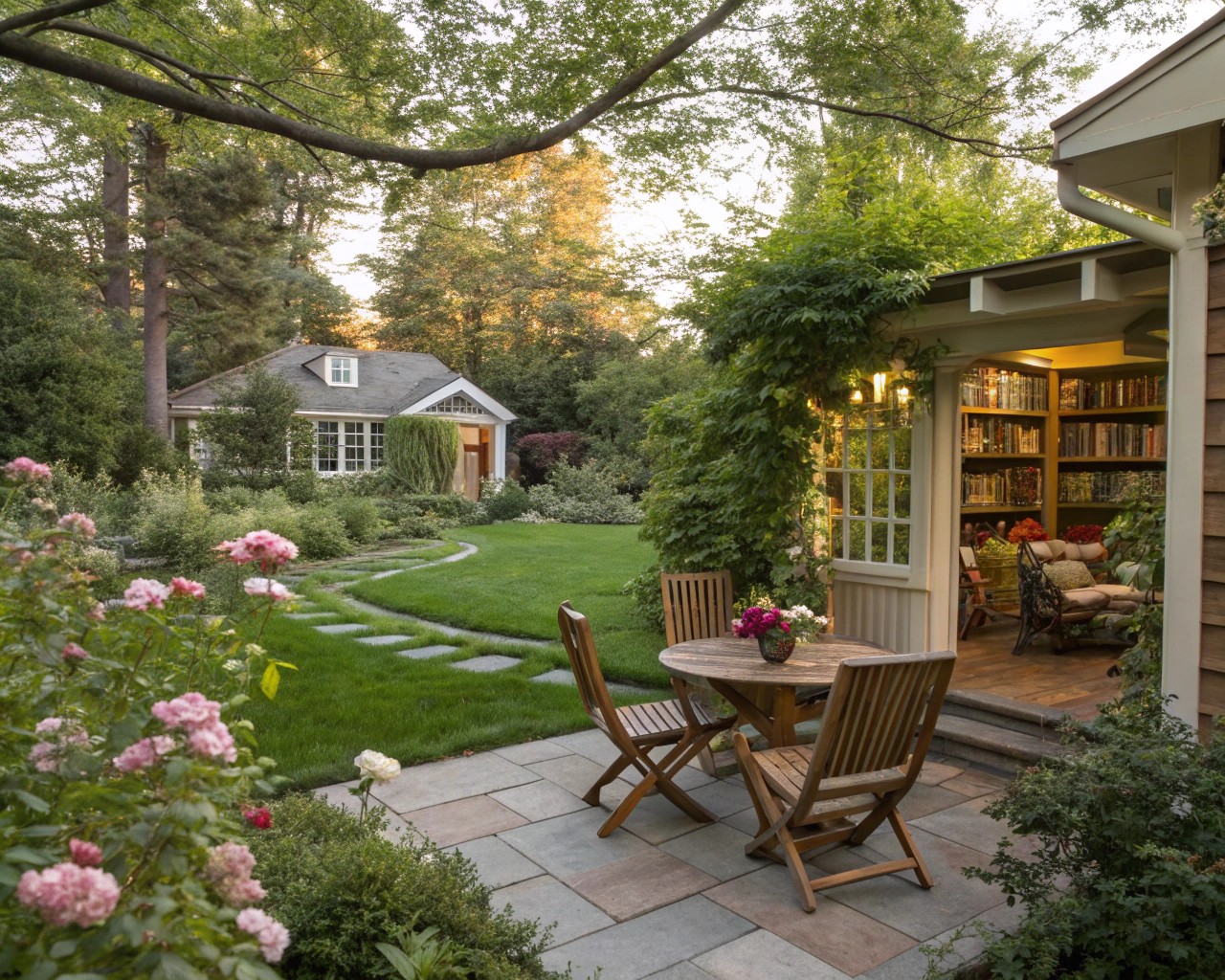
Garden beds become natural laboratories for cross-generational learning. At VISTA Gardens, volunteers and high school students work side by side in various garden areas, creating meaningful connections through shared tasks. Consider:
- Raised beds at different heights (wheelchair accessible, standing height, and child height)
- Wide paths between growing areas to accommodate mobility aids
- Tool storage accessible to all users
- Clear labeling systems that use both text and images
The Sensory Garden

A well-designed sensory garden engages all five senses and appeals to visitors of every age:
- Fragrant plants like lavender, mint, and roses
- Plants with interesting textures (lamb’s ear, ornamental grasses)
- Wind chimes or water features for auditory interest
- Edible plants for taste experiences
- Colorful flowers and foliage for visual stimulation
We recently completed a “sensory path” for a community garden in Sacramento that winds through different plant collections, each focusing on a different sense. The grandmother of one young visitor told me, “I’ve never seen my grandson so engaged in nature before.”
The Rest and Reflection Zone
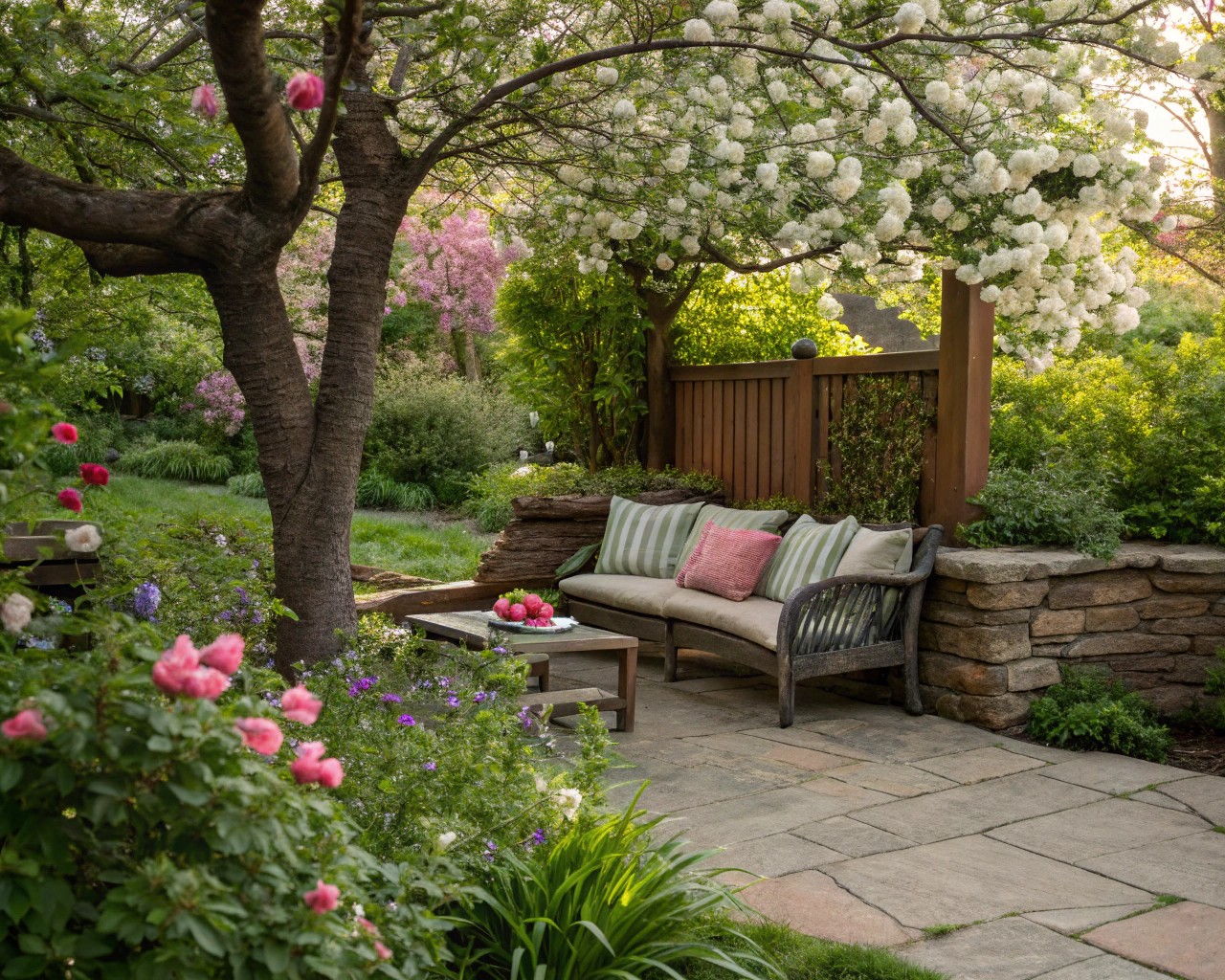
Quiet areas for conversation and contemplation are essential in intergenerational spaces:
- Comfortable seating with backs and armrests
- Some seating in shade and some in sun
- Small tables for games or snacks
- Visual privacy but clear sight lines to other garden areas
The Play and Exploration Zone
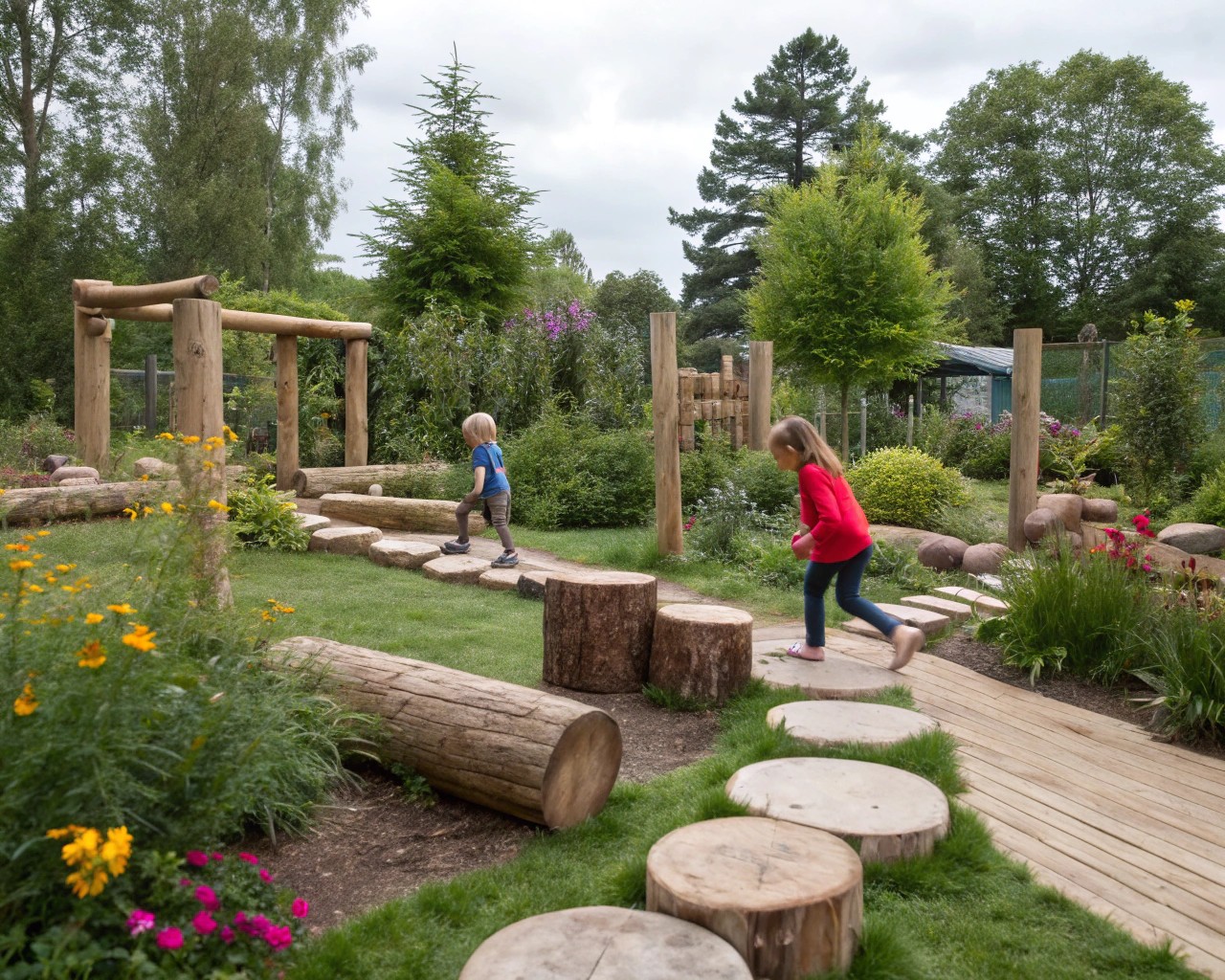
Areas designed for discovery can engage both children and adults:
- Natural play elements (logs, boulders, stepping stones)
- Wildlife-attracting features (bird feeders, butterfly plants)
- Simple water features that can be interacted with
- Hidden elements that encourage exploration
Plant Selection for Multi-generational Engagement
Thoughtful plant selection forms the backbone of successful intergenerational gardens. The best choices provide interest and engagement opportunities for all ages while remaining relatively low-maintenance.
Plants That Engage the Senses
Sensory-rich plants create universal appeal:
- Touch: Lamb’s ear (Stachys byzantina), ornamental grasses, fuzzy sage varieties
- Smell: Lavender, mint, rosemary, jasmine, roses
- Taste: Cherry tomatoes, strawberries, snap peas, herbs
- Sound: Grasses that rustle, bamboo stands, plants that attract songbirds
- Sight: Plants with changing seasonal interest, varied colors and forms
Plants for Different Age Groups
| Age Group | Plant Characteristics | Example Plants |
|---|---|---|
| Seniors | Low-maintenance, familiar varieties, accessible heights | Roses, hostas, easy-care perennials |
| Adults | Specimen plants, design-focused varieties, culinary options | Japanese maples, herbs, unusual vegetables |
| Youth | Fast-growing, interactive plants, observable changes | Sunflowers, pumpkins, butterfly bush |
| Children | Robust plants, safe to touch, quick rewards | Cherry tomatoes, strawberries, snapdragons |
When selecting plants for a recent family garden in Arizona, we specifically chose fast-growing sunflowers and snap peas that the children could harvest themselves, alongside hardy perennials that the grandparents could tend without excessive bending.
Seasonal Interest Planning
To maintain engagement year-round, plan for sequential blooming and seasonal features:
- Spring: Early bulbs, flowering shrubs, cool-season vegetables
- Summer: Colorful perennials, edible harvests, shade plants
- Fall: Autumn foliage, ornamental grasses, late-season fruits
- Winter: Evergreens, plants with architectural interest, winter berries
A garden that changes throughout the seasons provides ongoing conversation starters and reasons to return regularly—essential for maintaining intergenerational connections.
Programming Your Garden for Cross-Generation Interaction
While thoughtful physical design lays the groundwork, intentional programming activates the full potential of intergenerational gardens. Structured activities create frameworks for meaningful exchange between age groups.
Seasonal Activity Ideas
| Season | Garden Activities | Learning Opportunities | Celebration Ideas |
|---|---|---|---|
| Spring | Seed starting, bed preparation, planting | Plant life cycles, planning skills | Spring equinox gathering, Earth Day celebration |
| Summer | Harvesting, pruning, watering | Food production, plant care, water conservation | Harvest festivals, garden-to-table meals |
| Fall | Collecting seeds, planting bulbs, winter prep | Plant reproduction, seasonal cycles | Autumn equinox celebration, thanksgiving harvest |
| Winter | Indoor sprouting, garden planning, tool maintenance | Food systems, design thinking, tool skills | Winter solstice gathering, seed exchange |
Research from organizations like the National Center for Creative Aging and MetLife Foundation has explored how intergenerational gardening programs effectively engage communities. Their findings highlight successful models, such as the Mosaics Intergenerational Garden, which connects youth and elders through collaborative urban gardening projects.
In one community garden I consulted for, we implemented a “Garden Buddies” program that paired seniors with elementary school students. Each pair was responsible for a small plot, meeting weekly throughout the growing season. The school administrator later told me, “The children’s science understanding improved dramatically, but more importantly, they developed genuine relationships with their elder partners.”
Types of Intergenerational Garden Programs
-
Knowledge Exchange Workshops: Sessions where seniors teach traditional gardening skills while youth share new techniques or technology.
-
Garden-to-Table Programs: Collaborative growing, harvesting, and meal preparation activities.
-
Cultural Heritage Gardens: Spaces that celebrate diverse cultural gardening traditions, inviting stories and knowledge sharing.
-
Citizen Science Projects: Collaborative data collection on pollinators, weather patterns, or plant growth.
-
Garden Art Activities: Creative projects that beautify the garden while building relationships.
The key to successful programming is ensuring everyone contributes meaningfully regardless of age or ability.
Case Studies: Successful Intergenerational Gardens
VISTA Gardens: Bridging High School Students and Adult Volunteers
At VISTA Gardens, volunteers and students from Sickles High School National Honor Society worked together in various garden areas including a wildflower garden, cut flower garden, horticultural resource station, compost bins, and pond area. This collaboration fostered experiential learning and environmental stewardship while creating meaningful connections across generations.
What made this program successful was its focus on hands-on learning with clear, achievable tasks where both groups could contribute equally. The diverse garden areas provided something of interest for everyone involved.
Mosaics Intergenerational Garden: Urban Connection in New York City
This program connects youth and elders in community projects focused on urban gardens in New York City. Director Dr. Marianne Krasny has documented how these connections benefit both age groups while simultaneously improving urban green spaces.
The Mosaics program demonstrates how intergenerational gardening can address multiple community needs simultaneously: creating green space, building social connections, providing educational opportunities, and improving food access.
Cricket Ranch Farmers: Structured Mentorship
In this garden group, youth members (including those from diverse backgrounds) were paired with community mentor Ms. Betty (who had worked in food production for 30 years) and undergraduate mentor Camilla. The structured mentorship provided both gardening knowledge and broader life skills development.
What stands out in this case is how the deliberate pairing of youth with mentors of different ages created a multi-layered learning environment. Ms. Betty provided traditional gardening wisdom while Camilla bridged the gap between the generations.
Multi-generational Eco-Friendly Community in New York State
This permaculture-based community design incorporated six multi-generational homes, each with garden utility and functionality enabling a greener lifestyle. The community barn served as a hub for recreation, education and empowerment.
This example demonstrates how integrating gardens into residential design can facilitate daily intergenerational interaction rather than limiting it to special events or programs.
Managing Challenges in Mixed-Generation Garden Spaces
While intergenerational gardens offer tremendous benefits, they also present unique challenges that require thoughtful solutions.
Addressing Physical Ability Differences
The varying physical capabilities across age groups can create design challenges. Solutions I’ve implemented include:
- Multiple working heights for garden beds and tables
- Rest areas positioned strategically throughout the garden
- Tool modifications for different grip strengths and heights
- Task rotation systems so everyone can contribute meaningfully
In a community garden I redesigned in Chicago, we created adaptable work stations that could be raised, lowered, or moved to accommodate different users. A senior participant later told me, “For the first time in years, I can garden alongside my grandchildren without feeling like I’m holding them back.”
Balancing Different Interests and Attention Spans
Different age groups naturally have different interests and tolerance for activities:
- Create parallel activities in the same space (e.g., adults planting while children hunt for worms)
- Design activities with “entry and exit points” so participants can join or leave as appropriate
- Mix quick-reward activities with longer-term projects
- Incorporate elements of play into work activities
Managing Expectations and Communication
Clear communication helps avoid frustration:
- Establish simple, visible guidelines for shared spaces
- Create visual schedules for garden activities
- Use universal symbols alongside text for signage
- Hold regular garden meetings where all age groups have a voice
Safety Considerations
Safety remains paramount in intergenerational spaces:
- Ensure tool storage is secure but accessible
- Select non-toxic plants, especially in areas where small children play
- Create clear boundaries around water features
- Design sightlines that allow for supervision without hovering
Implementation Guide: Starting Your Own Intergenerational Garden
Whether you’re creating an intergenerational garden at home, in a community space, or as part of a larger facility, these steps will guide your process:
1. Assess Your Participants and Space
Begin by understanding:
- Who will use the garden (age ranges, abilities, interests)
- Available space and its characteristics (sun exposure, existing features)
- Budget and maintenance resources
- Potential community partners
2. Engage Stakeholders in Design
For a truly successful intergenerational garden:
- Hold design charrettes with representatives from all age groups
- Conduct surveys to identify priorities and preferences
- Create visual concept boards accessible to all ages
- Test ideas with small temporary installations before permanent implementation
Architect Mary Maydan highlights that involving participants, especially children, in the design fosters a stronger sense of ownership. I’ve found this principle applies equally to participants of all ages.
3. Develop a Phased Implementation Plan
Most successful gardens grow over time:
- Start with core infrastructure (paths, water, gathering space)
- Add garden beds and permanent plantings
- Incorporate specialized features and activity zones
- Allow for evolution based on participant feedback
4. Create Programming From Day One
Activities bring the garden to life:
- Begin with community building events (planting days, naming ceremonies)
- Establish regular maintenance sessions with roles for all ages
- Develop seasonal celebrations that become traditions
- Document and share success stories to build momentum
5. Evaluate and Adapt
Continuous improvement ensures long-term success:
- Observe how different groups use the space
- Collect feedback through age-appropriate methods
- Make seasonal adjustments to programming
- Plan for annual enhancements

